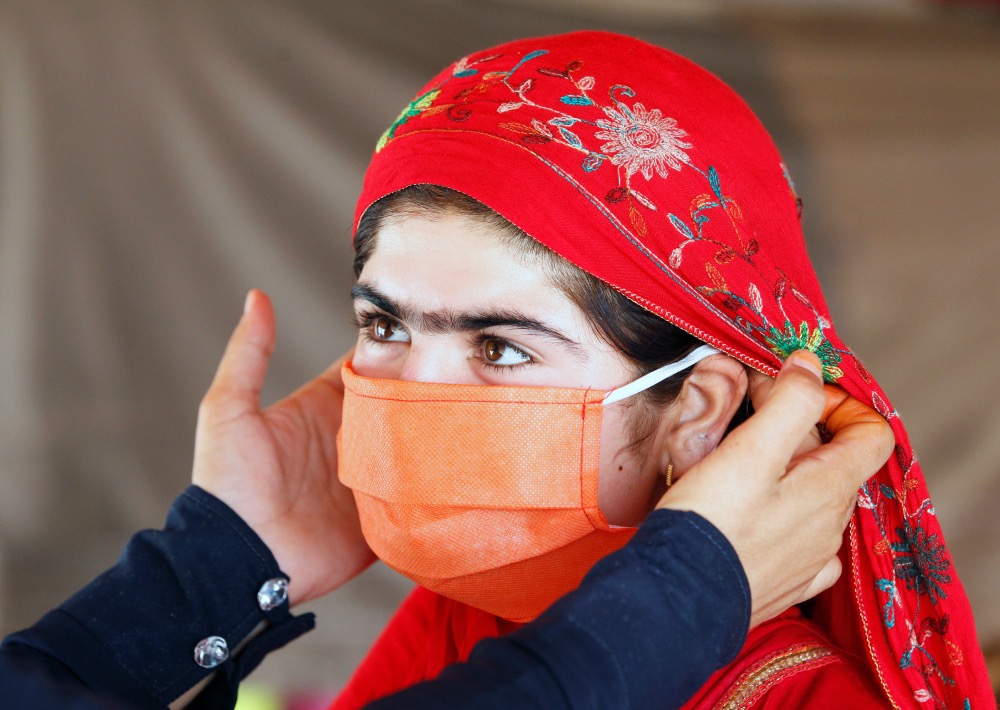Washington DC, US
Thomson Reuters Foundation
Big gaps between the number of male and female coronavirus cases in parts of Africa and the Middle East suggest that women may be struggling to access testing or care, an aid agency said on Wednesday.
In Pakistan, Afghanistan and Yemen, more than 70 per cent of reported cases were male, compared to a global average of 51 per cent, and the same was true in Central African Republic, Chad and Somalia, said the International Rescue Committee.

A UNICEF worker helps an internally displaced girl put on a face mask at a makeshift camp, amid the coronavirus disease (COVID-19) outbreak, in Jalalabad, Afghanistan, on 22nd June. PICTURE: ReutersParwiz
“What we are seeing is a situation in which women are potentially being left out of testing and their health deprioritized,” said Stacey Mearns, senior technical advisor of emergency health at the IRC.
“This could have serious ramifications for their physical well-being.”
The World Health Organization has urged countries to report the sex and age breakdown of confirmed COVID-19 cases so it can analyze who is affected most.
Fewer than half of globally confirmed cases had been reported with sex and age data, so any interpretation of gender differences should be done with caution, said the WHO in May.
As of this week the disease had infected about nine million people and killed almost half a million worldwide, according to a Reuters tally.
Studies in China, Europe and the United States have shown that men are more likely than women to be hospitalized and die of coronavirus.
But they have not shown the gender gap in confirmed cases that set off warning signals for the IRC. In most of Europe, the numbers of cases are roughly equal between men and women.
“The numbers do not add up,” said Mearns.
Testing is extremely limited in most low-income countries, and even more so in conflict zones, which is where the biggest gender gaps occurred, said the IRC.
Women in conflict-hit areas often have difficulty accessing health services due to gender discrimination and inequality, the agency added.
Globally, experts have warned that women may suffer the brunt of the virus’ impact because they are less likely to have health care, more likely to take on unpaid work and more likely to lose their jobs.





